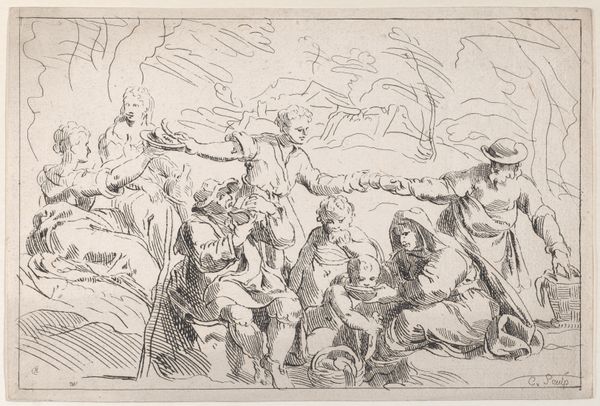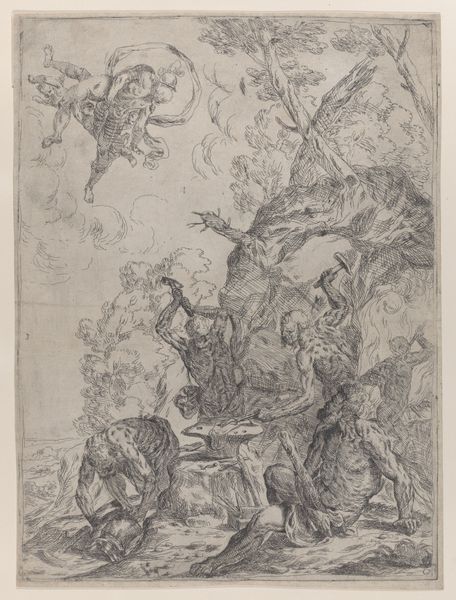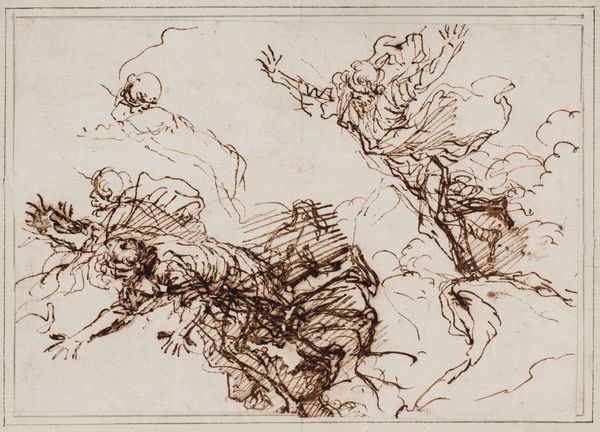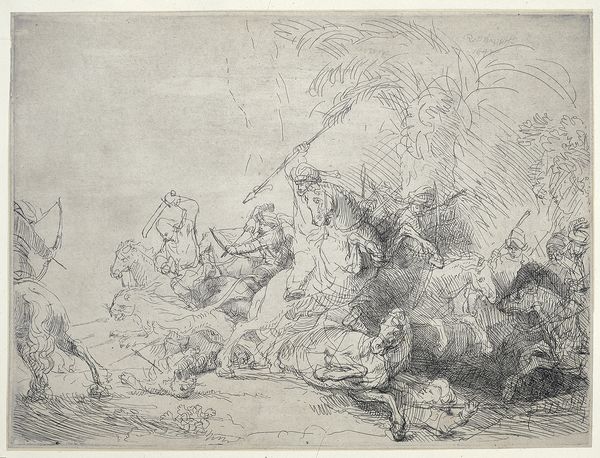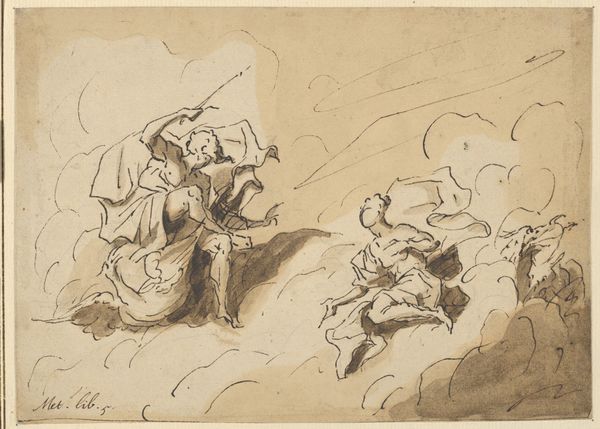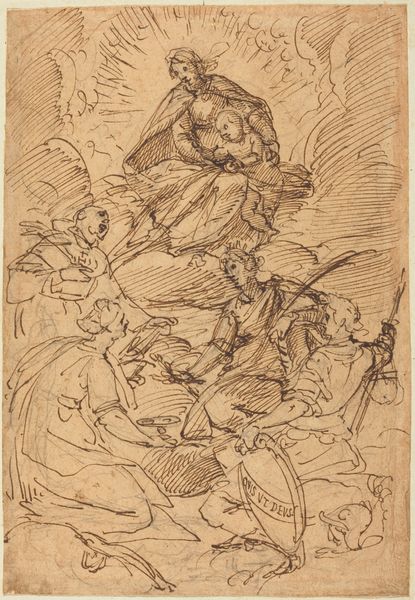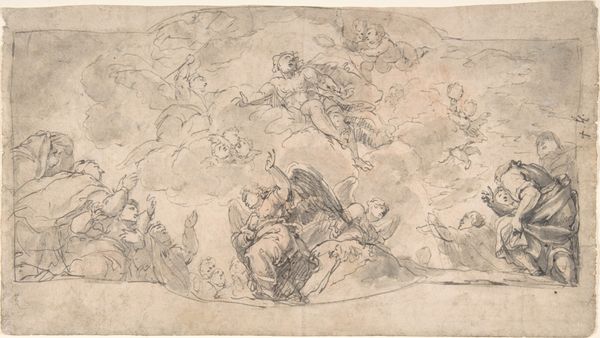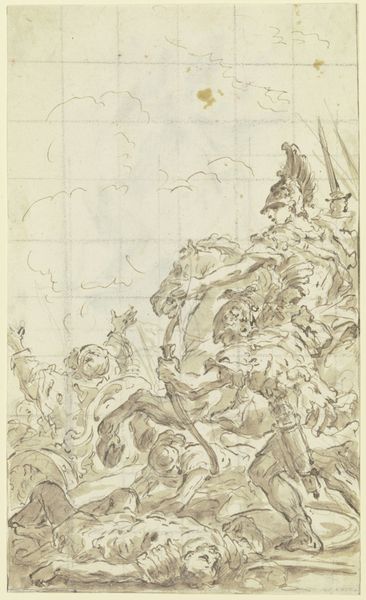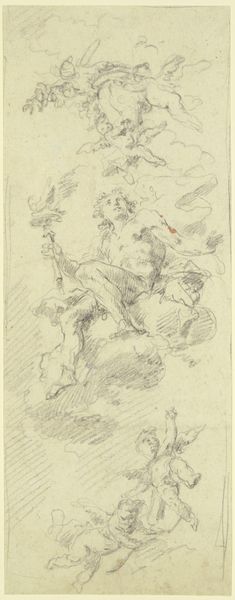
Study for "The Defeat of the Floating Batteries at Gibraltar" 1783 - 1786
0:00
0:00
Dimensions: sheet: 20.64 × 32.86 cm (8 1/8 × 12 15/16 in.)
Copyright: National Gallery of Art: CC0 1.0
Editor: This is "Study for 'The Defeat of the Floating Batteries at Gibraltar,'" a pen and ink drawing by John Singleton Copley, created sometime between 1783 and 1786. It's quite energetic, a mass of figures caught in a chaotic scene. I am struck by how Copley captured the dynamism of a moment in conflict. What do you see in this work? Curator: As a study, it provides a direct insight into Copley's working process. Look at the materials: pen and ink, readily available and inexpensive, allowed for immediate exploration. These sketches weren't precious objects, but tools for figuring out the final painting. Consider also the labour involved – Copley painstakingly mapped out figures and composition through repetitive marks. Editor: So you're saying the value isn’t in the finished piece but in the labor involved? Curator: Exactly! And what the process reveals. Here, the swift lines betray the urgency of war, the sheer number of figures implies a society caught up in conflict. This drawing then, moves away from a focus on individual genius to examine a moment in history seen through material availability and artistic toil. How does this emphasis change your perspective? Editor: It's interesting to think about it as a document of artistic labor and societal involvement rather than just an aesthetically pleasing artwork. Curator: Precisely. We begin to question traditional hierarchies that elevate finished oil paintings over preparatory drawings. The immediacy and raw quality of this study offers a different kind of value, speaking directly to the circumstances of its creation. Editor: I hadn't considered that the drawing itself could be a reflection of the social conditions surrounding its making. Thank you, it gives a lot to consider! Curator: Indeed. Examining the 'how' and 'why' of its creation always offers invaluable insights.
Comments
No comments
Be the first to comment and join the conversation on the ultimate creative platform.
